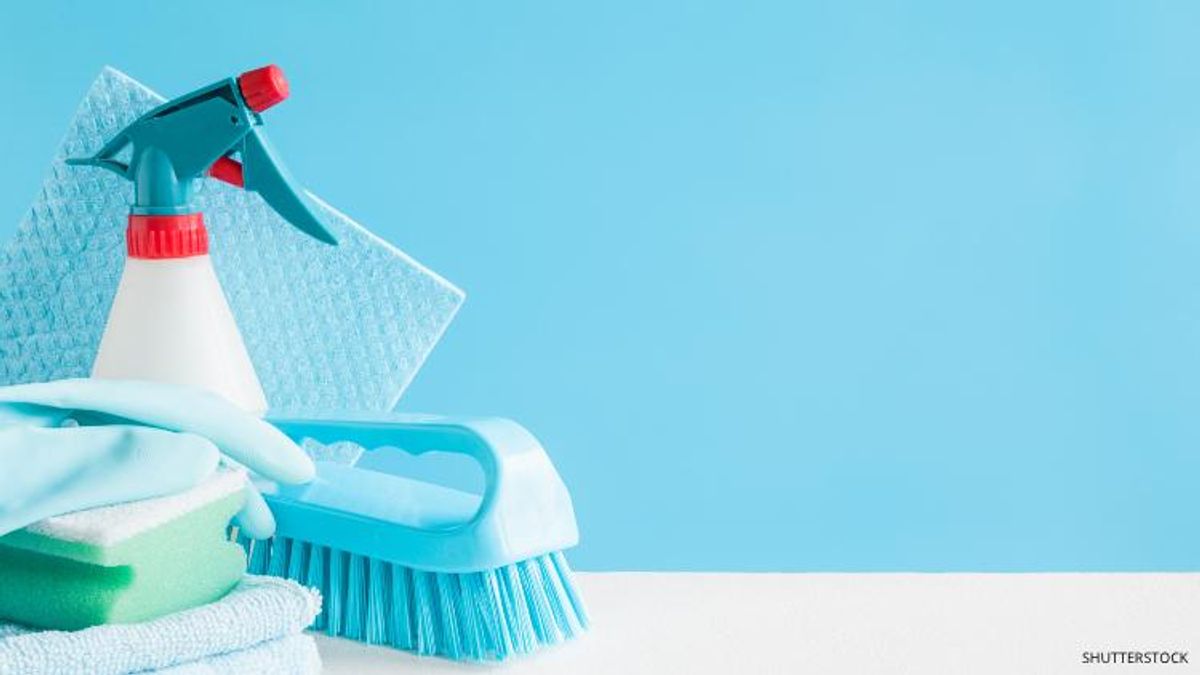Prevention
How To Properly Disinfect Your Surfaces During COVID-19

Those living with HIV are especially vulnerable, so it's best to stay on top of it.
March 24 2020 12:02 PM EST
By continuing to use our site, you agree to our Privacy Policy and Terms of Use.

Those living with HIV are especially vulnerable, so it's best to stay on top of it.
A new study published in the New England Journal of Medicine is revealing new information on how long COVID-19 can survive on household items.
In the study — conducted by the National Institutes of Health, the Centers for Disease Control and Prevention, UCLA and Princeton University — scientists monitored how long the virus continued to be infectious on various surface types.
The data showed that the virus can last for up to three hours in aerosols (liquid droplets in the air, from coughs or sneezes), four hours on copper, and 24 hours on cardboard.
However, COVID-19 can survive on plastic and stainless steel anywhere from two to three days.
In a press release from NIH, the data confirms that "people may acquire the virus through the air and after touching contaminated objects."
Those living with HIV and other conditions that suppress their immune system are especially vulnberable. So, what can we do to disinfect our homes? Check out what the CDC recemmends:
How to properly disinfect surfaces: (as explained by the CDC)
* Wear disposable gloves when cleaning and disinfecting surfaces. Gloves should be discarded after each cleaning. If reusable gloves are used, those gloves should be dedicated for cleaning and disinfection of surfaces for COVID-19 and should not be used for other purposes. Consult the manufacturer’s instructions for cleaning and disinfection products used. Clean hands immediately after gloves are removed.
* NOTE: if surfaces are dirty, they should be cleaned using a detergent or soap and water prior to disinfection.
* For disinfection, diluted household bleach solutions, alcohol solutions with at least 70 percent alcohol, and most common EPA-registered household disinfectants should be effective.
* Diluted household bleach solutions can be used if appropriate for the surface. Follow manufacturer’s instructions for application and proper ventilation. Check to ensure the product is not past its expiration date. Never mix household bleach with ammonia or any other cleanser. Unexpired household bleach will be effective against coronaviruses when properly diluted.
Prepare a bleach solution by mixing: 5 tablespoons (1/3rd cup) bleach per gallon of water or 4 teaspoons bleach per quart of water.
* Products with EPA-approved emerging viral pathogens claimspdf iconexternal icon are expected to be effective against COVID-19 based on data for harder to kill viruses. Follow the manufacturer’s instructions for all cleaning and disinfection products (e.g., concentration, application method and contact time, etc.).
* For soft (porous) surfaces such as carpeted floor, rugs, and drapes, remove visible contamination if present and clean with appropriate cleaners indicated for use on these surfaces. After cleaning:
* Launder items as appropriate in accordance with the manufacturer’s instructions. If possible, launder items using the warmest appropriate water setting for the items and dry items completely, or
Use products with the EPA-approved emerging viral pathogens claims (examples at this linkpdf iconexternal icon) that are suitable for porous surfaces.
What about clothing, towels, linens and other items that go in the laundry?
* Wear disposable gloves when handling dirty laundry from an ill person and then discard after each use. If using reusable gloves, those gloves should be dedicated for cleaning and disinfection of surfaces for COVID-19 and should not be used for other household purposes. Clean hands immediately after gloves are removed.
* If no gloves are used when handling dirty laundry, be sure to wash hands afterwards.
* If possible, do not shake dirty laundry. This will minimize the possibility of dispersing virus through the air.
* Launder items as appropriate in accordance with the manufacturer’s instructions. If possible, launder items using the warmest appropriate water setting for the items and dry items completely. Dirty laundry from an ill person can be washed with other people’s items.
* Clean and disinfect clothes hampers according to guidance above for surfaces. If possible, consider placing a bag liner that is either disposable (can be thrown away) or can be laundered.
When it comes to your hands...
* Household members should clean hands often, including immediately after removing gloves and after contact with an ill person, by washing hands with soap and water for 20 seconds.
* If soap and water are not available and hands are not visibly dirty, an alcohol-based hand sanitizer that contains at least 60% alcohol may be used. However, if hands are visibly dirty, always wash hands with soap and water.
* Household members should follow normal preventive actions while at work and home including recommended hand hygiene and avoiding touching eyes, nose, or mouth with unwashed hands.
* Additional key times to clean hands include: After blowing one’s nose, coughing, or sneezing;aAfter using the restroom; before eating or preparing food; after contact with animals or pets; before and after providing routine care for another person who needs assistance (e.g. a child).